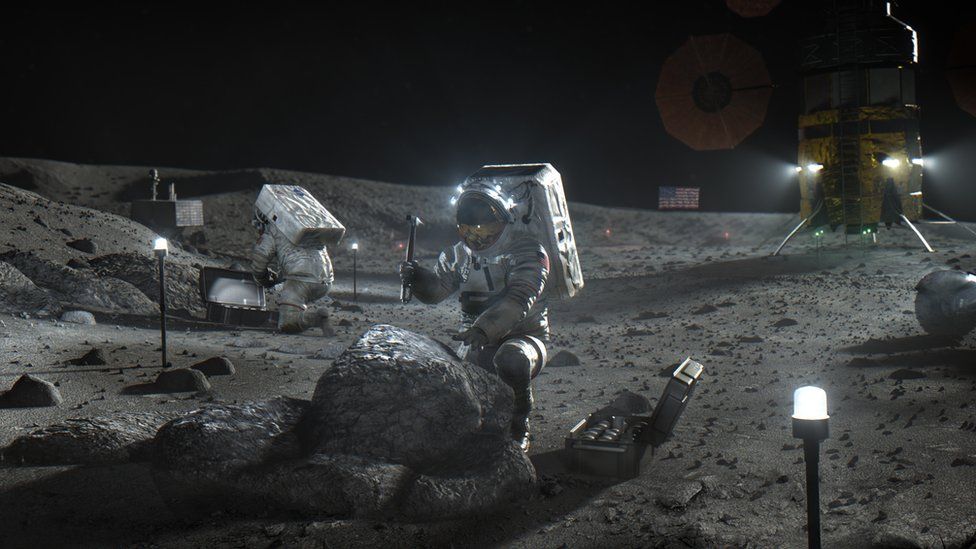Using the panel discussions of the most
recent World Science Fiction Convention in Spokane, August 2015, I will jump
off, jump on, rail against, and shamelessly agree with the BRIEF DESCRIPTION
given in the pdf copy of the Program Guide. This is event #4078. The link is
provided below…
Dawn of the
Asteroid Belt: Exploring Vesta and Ceres
Asteroids are
relics of the ancient Solar System. NASA’s Dawn spacecraft orbited Vesta for a
year. Now its ion thrusters have propelled it across the Asteroid Belt to
Ceres, the largest asteroid, where Dawn has again entered orbit. Join Bill
Higgins to explore Dawn’s findings at Vesta and its plans for doing science at
Ceres.
Bill Higgins,
Guy Consolmagno
As to expertise:
“William S. Higgins is a radiation safety physicist at Fermilab involved with
the transport of high-energy particle beams. He frequently writes and speaks
about spaceflight, astronomy, and the history of science. A graduate of Notre
Dame, he lives in Aurora, Illinois.” and “Brother Guy J. Consolmagno, SJ is an
American research astronomer and Director of the Vatican Observatory.”
OK…then.
Unassailable credentials!
The Asteroid
Belt of the Solar system seems to be the setting for an increasing number of SF
stories; most notably, THE EXPANSE series which started off as a simple “book”
by SA Corey (which, to add complexity an already complex series, is actually
TWO people, Daniel Abraham and Ty Franck) and became a hit TV series for SyFy.
What I want to
comment on however doesn’t really have anything to do with SF – but with
science fact.
For some time I’ve
been following a company called Planetary Resources, Inc. both on Facebook (https://www.facebook.com/PlanetaryResourcesInc/?fref=ts)
and on Twitter (https://twitter.com/PlanetaryRsrcs).
The company is not only deadly serious about mining the asteroids, they’re
moving ahead.
A few weeks ago,
I was talking with an former student/old friend of mine. Military and incredibly
intelligent, he’s looking to move into new areas. We started talking about
space exploration – and while he wasn’t interested in humans going there, he
was intrigued with the idea of mining the asteroids.
Not only was he
interested, I’ve had several students who, when I introduced the concept found
themselves drawn to it.
I point this out
only for this reason: the exploration and exploitation of space and the
materials there is an exercise for the young.
Spectacular
space operas are wonderful and in my opinion will only help to draw MORE people
into the field. The novels (I’ve only read one, accidentally thinking CALIBAN’S
WAR was the first, I’ll go back and read them in order one of these days) and
the TV show may very well serve as a catalyst the way the original STAR TREK
did for technology like cell phones, tablet computers, and a host of other “things”
(http://mentalfloss.com/article/31876/12-star-trek-gadgets-now-exist).
We don’t know
yet what the impact will be, but this speculative fiction Convention played
host here to some people who are members of a wave that might very well become
a tsunami in the future. Maybe not in the precise way the authors of THE
EXPANSE (and other asteroid SF – I’ve even gotten into the game with my series,
HEIRS OF THE SHATTERED SPHERES. The ship is made from the hollowed out asteroid
4179 Toutatis and the material that was mined was used to manufacture the “things”
inside.)
At any rate, I
have believed and will continue to believe that the Human future is in space.
Whether we meet aliens or find evidence of alien civilizations is something I
cautiously hope for.
If nothing else,
I recommend that you follow Planetary Resources; and if you got the big bucks,
think about investing in the company!


No comments:
Post a Comment